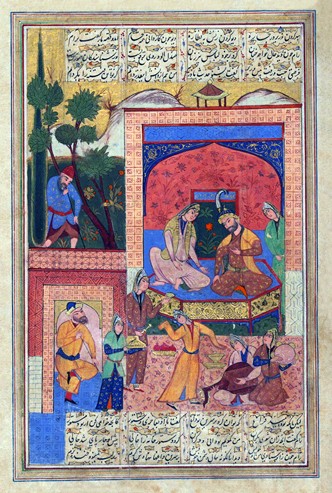Features on Asian Art, Culture, History & Travel
Archives
Archives > MIDDLE EAST > The Arabian Incense Road

The Arabian Incense Road
Myrrh, Gold and Frankincense
SEE RELATED IMAGES @ PICTURES FROM HISTORY
Perhaps the oldest trade route known to history, preceding the Silk Road by at least five hundred years, the Incense Road – also known as the Incense Route or Incense Trail – comprised a complex network of overland and maritime trade routes connecting the Mediterranean World of Antiquity with Southern Arabia, the Horn of Africa and India's Malabar Coast. These were the sources of fragrant resins and barks such as myrrh, frankincense, cinnamon and sandalwood used in the manufacture of incense, a product greatly desired and valued in the ancient civilisations of Egypt and Persia, Mesopotamia and the Indus Valley.
The use of incense subsequently spread from these regions to Greece and to Rome, where fragrant smoke was used for religious purposes, ritual purification and to mask bad smells. As with silk on the silk road, incense was light, easily transported and rare, making it an ideal and highly valuable substance to trade. Fragrant woods and oils travelled by coastal shipping around the Arabian Sea from Sri Lanka and Kerala, bound for the marts of Southern Arabia where they were joined by myrrh and frankincense from the resin trees of Oman and Somalia and either shipped up the Red Sea to Egypt or – more commonly – carried overland by camel caravan along desert trails traversing Arabia, Palestine and Syria before continuing overland via Asia Minor to Europe.
The trade flourished for more than a thousand years, from around the 7th century BCE to the 4th century CE. The main beneficiaries of the trade were the South Arabians, whose ports in Yemen and Dhofar prospered both as transhipment points for Indian Ocean and Red Sea vessels, and as termini for the caravan traffic heading north across the desert wastes to the Levant…
SEE MORE INCENSE ROAD IMAGES @ PICTURES FROM HISTORY
Text by Andrew Forbes; Photos by Pictures From History - © CPA Media
